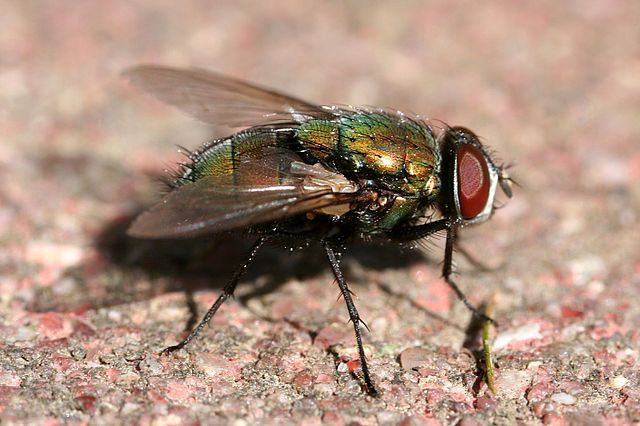Geneticially Modified Maggot Therapy May Someday Speed Up Wound Healing

It’s a potential scientific advance that’s as promising as it is gross to imagine: Genetically modified maggots that help our wounds heal faster.
Thankfully, at least for those of us with stronger stomachs, a recent study published earlier this month in BMC Biotechnology seems to have successfully taken the first step toward achieving that goal. The researchers, hailing primarily from North Carolina State University, created a line of green bottle fly, or Lucilia sericata, whose larva can grow and secrete a protein native to humans known as platelet derived growth factor-BB. Although regular maggots have received plenty of attention — and approval from the Food and Drug Administration — for their utility in cleaning difficult-to-treat wounds, they’re not believed to help wounds heal any faster than normal. The researchers are hopeful their modified maggots can bridge that gap, especially for conditions such as diabetic foot ulcers.
“A vast majority of people with diabetes live in low- or middle-income countries, with less access to expensive treatment options,” said senior author Dr. Maxwell Scott, a member of the university’s Department of Entomophagy, in a statement. “We see this as a proof-of-principle study for the future development of engineered L. sericata strains that express a variety of growth factors and antimicrobial peptides with the long-term aim of developing a cost-effective means for wound treatment that could save people from amputation and other harmful effects of diabetes.”
Scott and his team chose this specific protein because it’s already clinically approved as a treatment for chronic ulcers, among other medical conditions. To get maggots to grow it, they devised two methods. In the first, they engineered flies that would secrete it when exposed to human body temperature in the hopes it would make using them in the real world that much easier. Sadly, while there were detectable levels of the protein found in adult flies, they weren’t high enough in the larva.
“It is helpful to know that a heat-inducible system can work for certain proteins in the green bottle fly, but the fact that maggots did not secrete the human growth factor makes this technique a non-starter for clinical applications like maggot debridement therapy,” Scott said.
For the second method, the researchers engineered the bottle flies to secrete the protein only if their diet didn’t contain the common antibiotic tetracycline, which produced measurable levels in maggots and adult flies alike.
Because the research is in its earliest stages, Scott and his team believe they haven’t come close to the limits of what can be done with genetic modification. “In the long term, clinicians might have at their disposal a panel of larvae expressing different factors for each individual wound based on the species of bacteria present in an infection, stage of wound healing, and level of inflammation,” they wrote.
They added that the next steps could be to expose damaged human cells in the lab to these maggot secretions as well as attempting to treat wounded rats with them.
At the very least, maggots might soon earn some positive press, a change from the news coverage they typically get right now .
Source: Linger R, Belikoff E, Yan Y, et al. Towards next generation maggot debridement therapy: transgenic Lucilia sericata larvae that produce and secrete a human growth factor. BMC Biotechnology. 2016.
Published by Medicaldaily.com



























